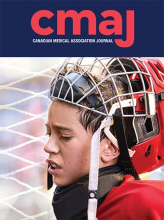We appreciate the opportunity to respond to correspondence related to our article.1 Critics of our paper suggest that our choice of model parameters is incorrect; our interpretation of our model results is incorrect; and our research stokes anger toward those who choose to remain unvaccinated against SARS-CoV-2.
In our model, we treat contacts with vaccinated and unvaccinated infectives as equally infectious, which has the effect of biasing our results against vaccination. Recent data from Puhach and colleagues2 show reduced infectivity among fully vaccinated individuals, relative to unvaccinated individuals, when infected.
Several correspondents, including Schabas,3 suggest that we have used unduly favourable estimates of vaccine efficacy in the face of the Omicron variant. In fact, the best and most recent Canadian data from Carazo and colleagues4 are remarkably consistent with our base case parameter values for vaccine efficacy in the face of Omicron infection (vaccine efficacy 70%–80%). Furthermore, our findings don’t change in the face of wide-ranging sensitivity analyses on vaccine efficacy.
Although it is true, as Doidge and colleagues note in their letter,5 that it would be possible to create scenarios where vaccinated individuals were less protected than unvaccinated individuals, this would necessitate the use of parameters without relation to real-world data, and would also (for example, in the scenario where there is far more widespread immunity among unvaccinated than among vaccinated people) require that we treat unvaccinated people as though they have already come through an epidemic (while ignoring the costs and risks of their having done so), while treating vaccinated people as though their epidemic is yet to come. This, we believe, would be nonsensical.
Other correspondents correctly pointed out that our model does not include waning immunity, which appears to be an important limitation of mRNA vaccine-derived immunity,6 as well as immunity conferred by previous infection. Importantly, boosted mRNA vaccination results in substantially higher antibody titres than are seen after natural infection. According to the work of Townsend and colleagues, 7 it can be inferred that the durability of immune protection after vaccination will be greater than that seen with infection, and this observation can be used to shape postpandemic vaccine policies. We hope to provide a follow-up analysis on this point in due course.
Balancing the rights of individuals with the rights of the wider community is a key tension in public health practice. Canadian public health statutes do contain provisions to limit the freedoms of individuals when this is necessary for protection of the wider community from virulent communicable diseases. Identification of sources of risk does not imply stigmatization or moral condemnation. Identification of sources of risk does, however, allow us to protect the populations we serve.
Footnotes
Competing interests: None declared.
This is an Open Access article distributed in accordance with the terms of the Creative Commons Attribution (CC BY-NC-ND 4.0) licence, which permits use, distribution and reproduction in any medium, provided that the original publication is properly cited, the use is noncommercial (i.e., research or educational use), and no modifications or adaptations are made. See: https://creativecommons.org/licenses/by-nc-nd/4.0/








